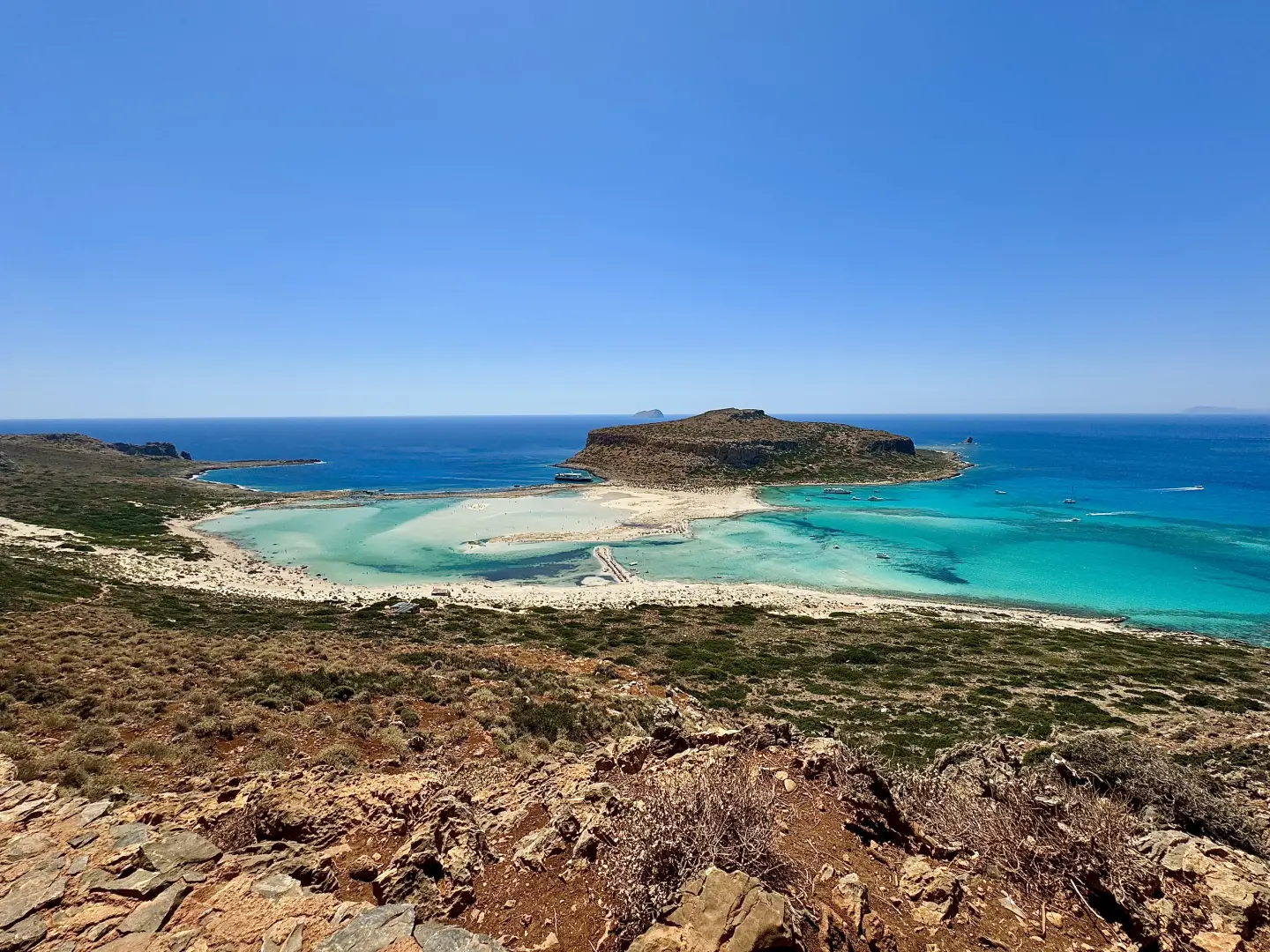Balos Lagoon, from the Balos car park

Access
Reaching the Balos car park by car requires driving along a long, scenic dirt road that starts near Kaliviani, about 7 km from Kissamos. From the centre of Kissamos take the road westwards to Kaliviani, then follow the signs for Balos. After the village, the road becomes a dirt track, about 8 km long, which can be travelled carefully and at low speed. At the end you will reach the car park at the top of the peninsula, the starting point of the path.
The site is not served by direct public transport. Alternatively, during the summer season it is possible to reach the lagoon by boat from the ports of Kissamos or Falassarna.
Introduction
The Balos Lagoon is one of Crete's most iconic destinations, located at the north-western end of the Gramvousa peninsula. Famous for the colour contrasts between the turquoise waters and the pinkish white sand, the lagoon is protected as a natural area of ecological interest. The hike from the scenic car park overlooking the lagoon provides easy access to this unique place, via an easy and scenic path overlooking the Cretan Sea.
Description
From the dirt car park at Balos, take the clearly marked path that descends in a north-westerly direction, following the signs for the lagoon. The path is wide and beaten, initially slightly downhill on stony ground. After a few minutes, reach a vantage point, equipped with wooden balustrades, from which there is a spectacular view of the lagoon, the island of Tigani and the island of Gramvousa.
Continue along the path, which continues to descend with natural stepped sections, always keeping the lagoon in view on the left. The path does not present any particular difficulties, but in some places the ground is slippery, requiring attention especially on the descent. After about 20 minutes, you reach the base of the sandy basin, where the path ends close to the beach. From here, it is possible to cross the shallow, crystal-clear waters barefoot to move between the different areas of the lagoon and reach the sandy strip separating it from the open sea.
The return trip is along the same route, with a steady but never difficult climb, preferably in the cooler hours.